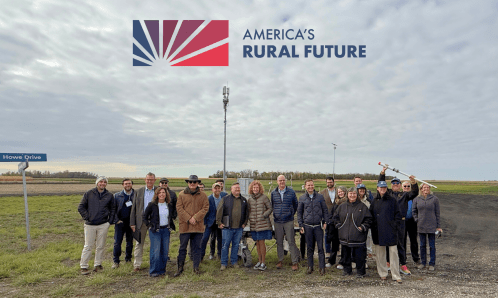Executive summary
Across the United States, regional leaders face a pressing mandate to grow good jobs and expand economic mobility for all residents. But no single organization has the knowledge, influence, and resources to deliver on this mandate alone. Cross-sector coalitions—public, private, nonprofit, and philanthropic actors working together on a shared, transformative vision that integrates talent, innovation, and placemaking strategies—offer a compelling approach. Both theory and practice show that when managed well, cross-sector coalitions can help regions achieve greater strategic alignment, resource efficiency, and economic resilience. This evidence has led to a growing adoption of coalition-based strategies across the nation, partly enabled by recent federal policies that incentivized the formation of these place-based coalitions. But gaps remain: While local and regional leaders recognize the value of collaboration, the work of aligning priorities and initiatives across organizations with divergent incentives—all to deliver meaningful outcomes—is often messy and time-consuming.
The purpose of this report is to help leaders working in government, higher education, community organizations, philanthropy, and the private sector build and sustain effective cross-sector coalitions that grow good jobs and improve pathways to economic mobility.
The report draws on a nine-month collaboration between America Achieves, Brookings Metro, and 11 regional coalitions—incorporating interviews, site visits, and peer learning from practical discussions and exchanges. It distills lessons for regional practitioners, investors, and policymakers into five foundational building blocks of cross-sector coalitions (aimed primarily at local and regional leaders), as well as five implications for the future of place-based economic policy (aimed primarily at policymakers and investors).
Five building blocks for cross-sector coalitions
To turn collaboration into outcomes, every cross-sector coalition needs a clear foundation. The five building blocks listed below define how coalitions move from vision to results.
- Shared focus: Clear, long-term North Star vision, goals, and outcomes defining the potential big win for the coalition’s work, with intermediate priorities.
- Governance structure: Established coalition leadership and membership structure with defined roles and responsibilities.
- Operational rhythm: Processes for distributed decisionmaking, strategic implementation, and stakeholder engagement.
- Performance management: Capacity to establish baseline data, then set appropriately actionable metrics and targets to track and communicate short-, medium-, and long-term progress, driving strategic and operational outcomes.
- Financial sustainability: A financial model that blends and braids public, commercial, philanthropic, and other capital sources to sustain the strategy.
Five implications for the future of place-based economic policy
The experiences of regional coalitions suggest that government funding can play a uniquely critical role in driving outcomes at scale by:
- Incentivizing long-term strategic alignment, including with priority industry sectors and high-level objectives for growing good jobs and economic mobility.
- Investing in strategic convening to reduce barriers to cross-sector collaboration throughout strategic planning, project development, and execution.
- Funding data and accountability systems to track regional progress toward stated goals and ensure outcomes-focused performance management.
- De-risking private investment by funding critical pre-competitive shared assets (e.g., planning, public goods, coordination, etc.) that crowd in co-investment from other sectors.
- Conveying credibility to regional strategies through competitive planning and grant award processes, thus validating a region’s competitive advantages.
Read more
-
Acknowledgements and disclosures
Brookings Metro thanks the many regional leaders and national experts who helped inform and shape this work. We’d especially like to thank our Brookings Metro collaborator Ryan Donahue, who led several sessions with the PLC on key topics covered in this report. Special thanks also go to our partners at America Achieves, especially Jay Altman, Andrew Trueblood, and Cali Williams for their thought partnership in developing this report, and for their thoughtful review of earlier drafts that shaped the piece. This work would also not have been possible without the day-to-day work of the regional leaders in the Good Jobs Economy Peer Learning Cohort. We’d like to thank the following individuals, including America Achieves leaders, PLC members, and other regional leaders, for their guidance during the PLC and helpful feedback on earlier drafts: Zakiyyah Ali, Kate Broshears, Susie Byrd, Brandon Dennison, Frank DiGiammarino, Kevin Gallagher, Cyrus Garrett, Jason Green, Amy Gwin, Wendy Harris, Francesca Ioffreda, David Johnson, Kristina Kent, Cristina Killingsworth, Samuel Kurtz, Matt Lewis, Jennifer Mishory, Joy Polefrone, Christine Roeder, Laura Rowley, Donn Rubin, Jon Schnur, Joe Stefko, Galen Treuer, and Tim VanReken. Support from America Achieves made this project possible. All remaining errors and omissions are the sole responsibility of the authors.
The Brookings Institution is committed to quality, independence, and impact.
We are supported by a diverse array of funders. In line with our values and policies, each Brookings publication represents the sole views of its author(s).






